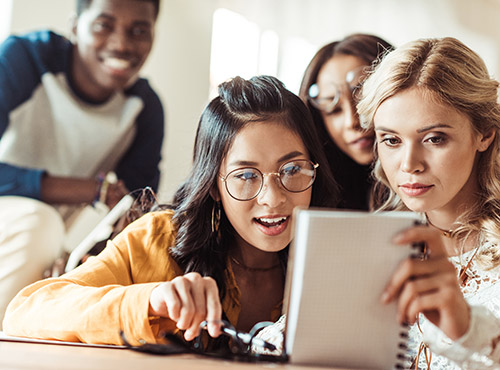
As our National Training team works with educators across the country, we sometimes hear them say that with everything that needs to be accomplished in a school day, there simply isn’t time to teach social skills. However, inappropriate behaviors happen. Rather than waiting to try to teach appropriate behaviors during correction, we recommend proactively teaching students alternative positive behaviors.
Proactive teaching includes setting aside time for a purposeful social skills lesson, prompting students when an opportunity arises to use a social skill, and helping students see the value of using a skill outside the classroom. All of these help set students up for success by creating expectations for behavior in a variety of environments.
Once students have been taught social skills, teachers can embed additional social skill instruction and practice into the academic day. Blending academic and behavioral teaching can provide effective and efficient enhancement of social skills teaching. This blending can be done by pairing social skills with both academic content and academic activities.
Pairing social skills with academic content. Whether you are teaching kindergarteners or seniors in high school, the curriculum at all grade levels can lend itself to discussion and reinforcement of social skills.
Reading and literature discussion lessons can sometimes be the easiest way to embed social-emotional learning into the comprehension of a story or a novel. One story included in a reading basal I remember vividly from my years as a classroom teacher was the story about a man who lived on a “neat” street where all of the houses looked the same until one day a seagull (who happened to be carrying a can of orange paint) spilled the paint on the man’s house. The man had a choice. He could repaint his house to look like everyone else’s or he could repaint his house to represent his dreams. He chose the latter. One by one his neighbors came to talk to him to convince him to change his house back so the street could remain a “neat street.” Social skills such as “Listening,” “Accepting Criticism,” and “Having a Conversation” not only aided in the comprehension of the story but also helped my students see real-life applications of those skills.
Social studies, government or history lessons also provide ample opportunities for social skill discussion. For instance, when teaching the Branches of Government, a variety of social skills comes to mind. Our website, has lesson plans on “Disagreeing Appropriately” and “Making an Apology” that you may find could work well when reinforcing skills in a social sciences class.
Pairing social skills with academic activity. There can be several times in the course of a school day in which students have the opportunity to apply social skills. Adding social skill instruction or reminders need only take a minute or so. This is time well-spent as it can help prevent time wasted when having to redirect or correct students.
Many teachers find using math manipulatives enhance a student’s understanding of concepts and processes. Before having access to manipulatives, a teacher may want to review “Following Instructions” to keep students focused on the task at hand. Perhaps even, “Ignoring Distractions” from others who may be using the manipulative inappropriately might help the activity run more smoothly.
When conducting a science experiment, it may be important to reinforce with students the skills of “Staying on Task” or “Asking for Help.”
Any time students work in Cooperative Learning Groups, skills such as “Working with Others” and “Appropriate Voice Tone” help students be more efficient and productive.
With all that needs to be accomplished each and every school day, teachers can enhance their efficacy in both academic and behavioral instruction by taking the opportunity to blend academics and social skills whenever the opportunities present themselves.
Be sure to take a look at our lesson plans & activities page for helpful tools and strategies!
